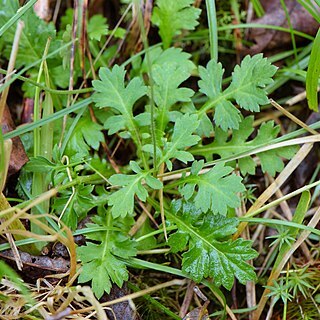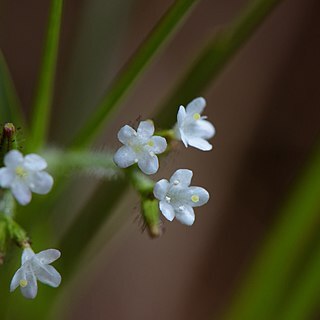Herbs, perennial, erect, 15-40 cm tall. Taproots 2-forked, brown, nearly fusiform, 30-50 × 2-3 mm, slightly fleshy. Rhizomes elongate, 4-angular, nodes 4-6, internodes 0.5-2 cm, nodes rooted. Stems angular, glabrous or sparsely puberulent, glandular hairy above. Leaves opposite, petiolate; petiole 1-3 cm; leaf blade obovate-lanceolate, 2-6 × 1.5-4 cm, pinnatifid, more deeply so at base, abaxially puberulent on veins, adaxially sparsely puberulent, ultimately glabrescent, margin irregularly lobed or serrate; upper leaves smaller, lobed, sessile. Inflorescences paniculiform; bracts 2-4 mm, midvein prominent, margin sparsely ciliate; pedicels ca. 1 mm; outer involucel 4-lobed; lobes lanceolate, 1.5-2 mm, abaxially densely covered with purple glandular hairs; inner involucel urceolate, ca. 1.5 mm, 8-ribbed, apex constricted into limb; limb 8-toothed or 8-dentate. Corolla white or rose, funnelform, 3-5 mm; lobes obtuse. Stamens slightly exserted; filaments ca. 5 mm; anthers white. Style slightly longer than stamens. Achenes enveloped by involucels; involucels 3-4 mm in fruit, glandular hairy, 4-lobed; lobes long acuminate, hooked. Fl. and fr. Jul-Oct. 2n = 18.


